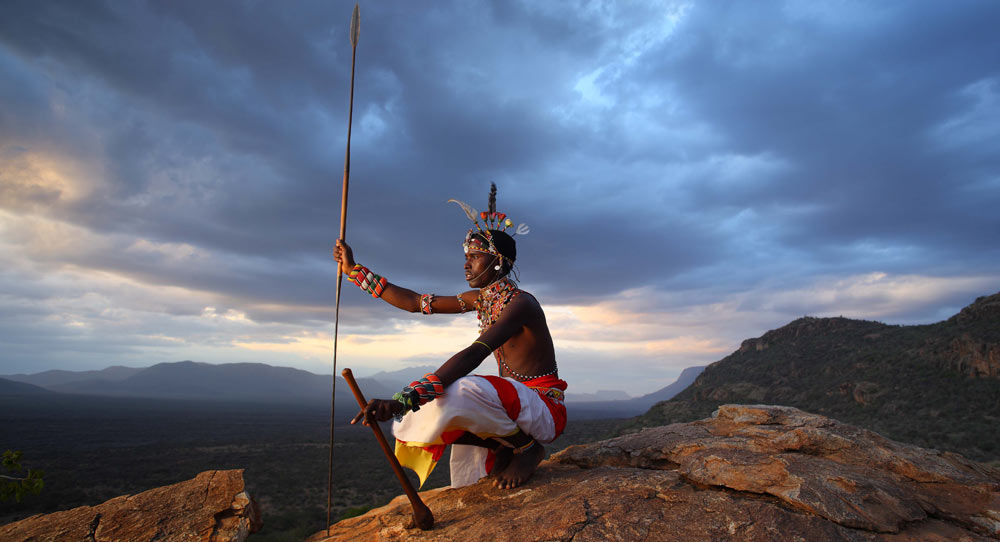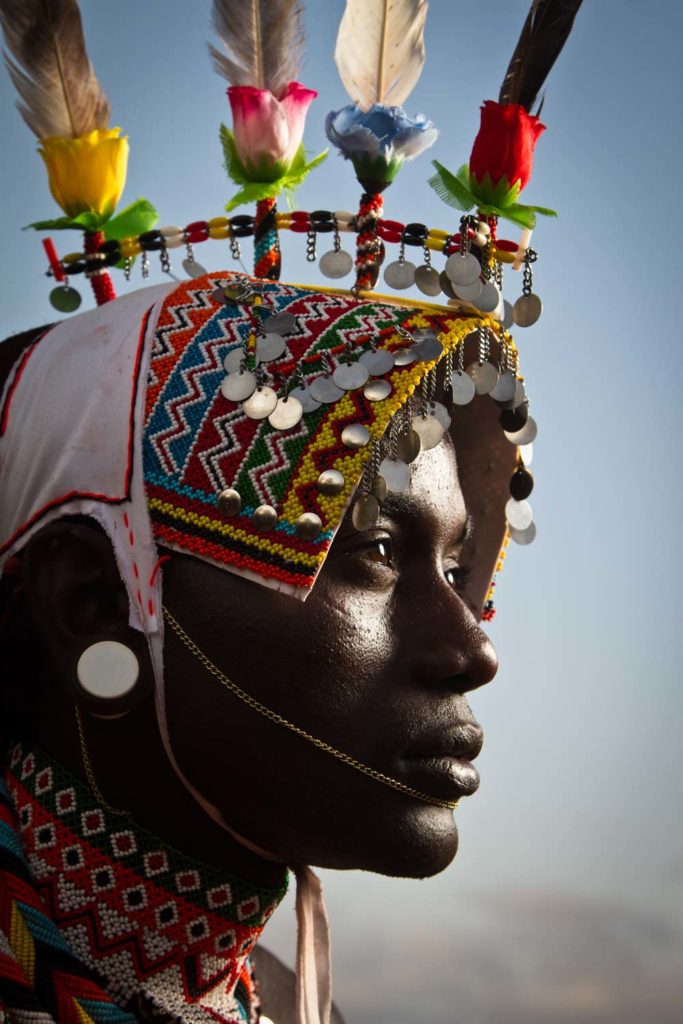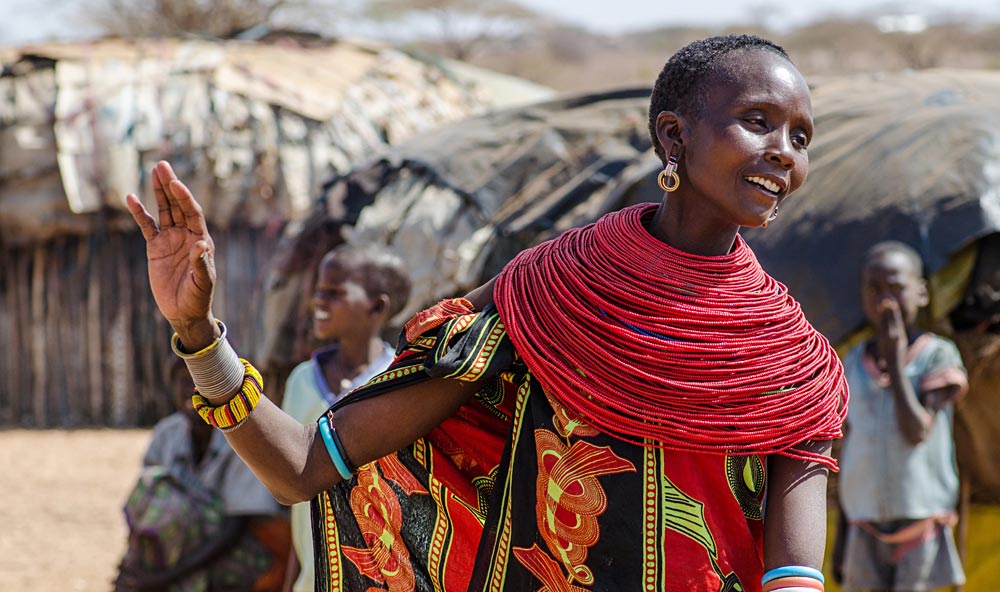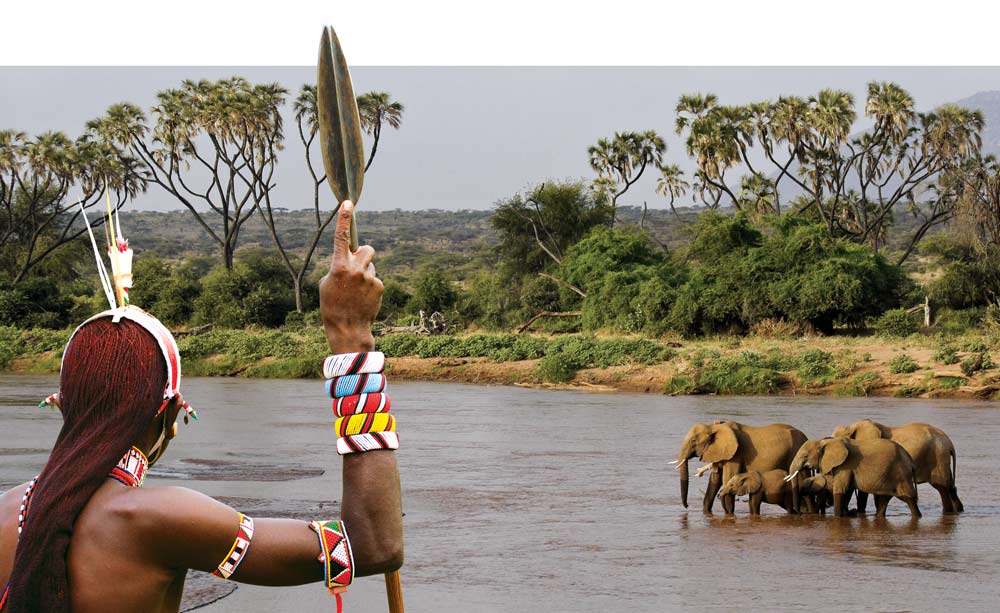Kenya is a microcosm of Africa. People have migrated here from all over the African continent for centuries, and each incoming group has added to the cultural weave with a distinctive ethnic thread of their own. More brilliant than most, are the strands contributed by the Samburu, who live in the painted deserts of the north.

The butterfly people
It is said that the word ‘Samburu’ means butterfly, and there is much of the butterfly in these brightly coloured people, who flit across their harsh but beautiful landscape like so many exotic moths.
The young warriors, lithe and slender, may pride themselves on their beauty but they are renowned for their prowess as warriors. Unlike their cousins, the Maasai, the young Samburu men do not smear their entire body with ochre but make triangular designs down their chest and back. Wearing their traditional shukas wrapped tight around their waists, they apply elaborate paint around their eyes and accentuate the fineness of their elegant facial features with a beaded visor. Down their backs hang long braids of hair.

The meaning of beads
The girls, close shaven, wear intricate beadwork caps that loop around their eyes and nose. Their necks are encircled by hundreds of rings of beads, which undulate as they dance. Every woman’s collar is unique. Her first loops are given to her by her father. Later, her boyfriend may give her a collar as an indication of his love, but this must be returned when the girl is betrothed to the man of her parents’ choice. Now she will wear only scarlet beads until her marriage, and thereafter her beads will indicate how many children she has born. Lovers of butterfly yellow, brilliant blue and flaming pink, these days the Samburu seem to be conducting a love affair with the imported plastic flower. Both sexes like to top off their headdresses with either a daffodil or a tulip, worn in the style of a plume.

The Samburu are loosely related to the Maasai, being both nomadic and Maa-speaking. But the Samburu live in the arid desert lands to the north of Kenya between the jade waters of Lake Turkana and the muddy coils of the Ewaso Nyiro River. Herders of sheep, goats, cows and camels, the Samburu, like the Maasai, live primarily on blood and milk drawn from the necks of their living herds. Their clans are held together by age-group brotherhoods and their elaborate social customs have been handed down from centuries past.
The samburu and the elephants
Inhabitants of the dry, rock-strewn northern lands, the Samburu claim a close proximity with their fellow inhabitants, the elephants. Like the elephants, they are brave and loyal, their matriarchs are strong and their young men are cast out from the clan to prove their strength.

Indeed, it is said by the Samburu that at the dawn of time, they and the elephants lived side by side and helped each other. But one day a Samburu woman asked an elephant to go and gather sticks for her fire. The elephant returned with an entire tree that he had knocked over. ‘You stupid creature,’ said the woman, ‘I asked for sticks, not a tree. How can I make a fire with that?’ The elephant, much affronted, stormed out of the village catching up a hide that was drying in the sun and throwing it on to his head as he went. And ever since that time, the elephants have worn this hide as a pair of ears, which flap when they are annoyed.
© 2025 Kenya Holidays
